言葉で語れば現れるデータの世界 - Amazon QuickSight Generative BIの魔法

はじめに
はじめまして、データ分析部-分析G-分析プロデュースT(兼データサイエンスT)の森本和樹と申します。
普段は大阪オフィス勤務で、リテンションProj・与信Proj・中古車部・MyRouteアプリに関連する分析テーマを取り扱っております。
(詳しい業務内容はおって別テックブログに記載予定していきたいな〜と考えております。)
さて、今回の記事では"QuickSight Generative BI"のプレビュー版を使ってみた内容を紹介していきたいと思います。
先月TOYOTAグループ向けAWS生成AIワークショップに参加させていただいた時に紹介があり、「これ結構使えんじゃね?」と思い試してみた結果です。
本記事で書く内容
- QuickSight Generative BIの概要
- Generative BIでラーメンサブスクの売上ダッシュボード作ってみた
- 良かった点/今後に期待
本記事で書かない内容
- QuickSightの使用方法
- QuickSight Qの説明
- Generative BI の利用開始方法(こちらがよくまとまっておりました)
Amazon QuickSight の Generative BI 機能を発表
Generative BIとは
簡単に言うと、"QuickSight Q"に"Amazon Bedrock"のLLMを適用することでより幅広い機能が追加されたサービスです。
元々"QuickSight Q"という自然言語で質問を投げかけると、その回答をグラフで返してくれる機能がありました。
そこに"Amazon Bedrock"のLLM(大規模言語モデル)を適用することで、より自由度の高い分析を自然言語ベースで行えるようになりました。
※QuickSight Qは東京リージョン他多数のリージョンで利用可能。参考
Generative BIでダッシュボード作ってみた
それでは早速Generative BIを試していこうと思います。
今回は「もしKINTOがラーメンのサブスクを始めたら」という仮想テーマでダッシュボードを作っていこうと思います。
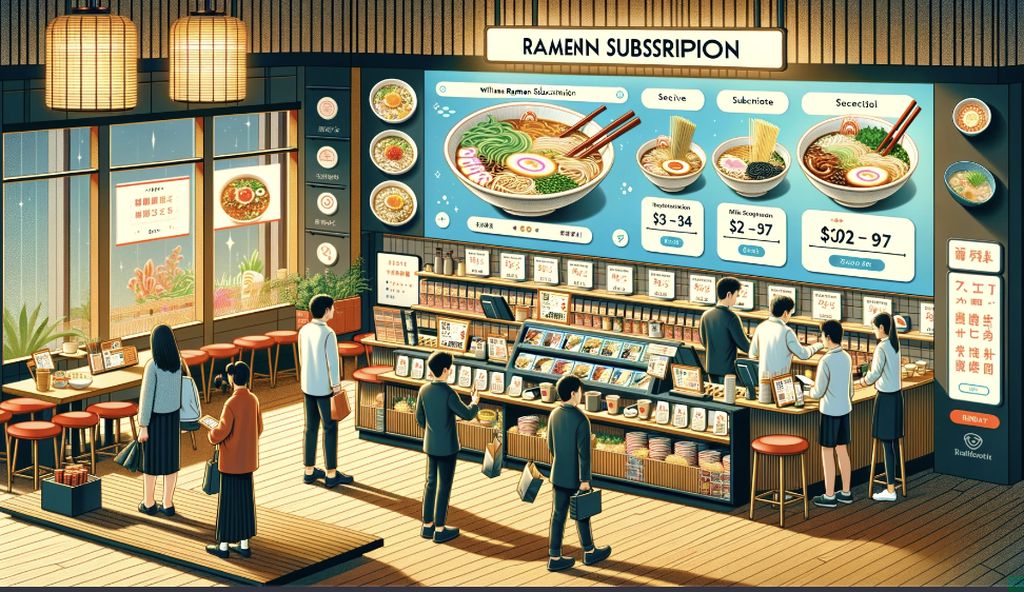
※KINTOはモビリティサービスを手掛ける会社ですので、ラーメン事業には手を出さない。。と思います。。
目指す姿
今回はCRISPさんが公開しているダッシュボードの"セールス"セグメントを参考にし、下記2つのダッシュボードを作ることを目標におきます。
- 売上(年月ごと)
- 契約プラン構成比
前準備
前準備としてラーメンサブスクのサービス概要とサンプルデータを作成します。
サービス概要
ChatGPTにラーメンサブスクの契約プランを考えてもらいました。
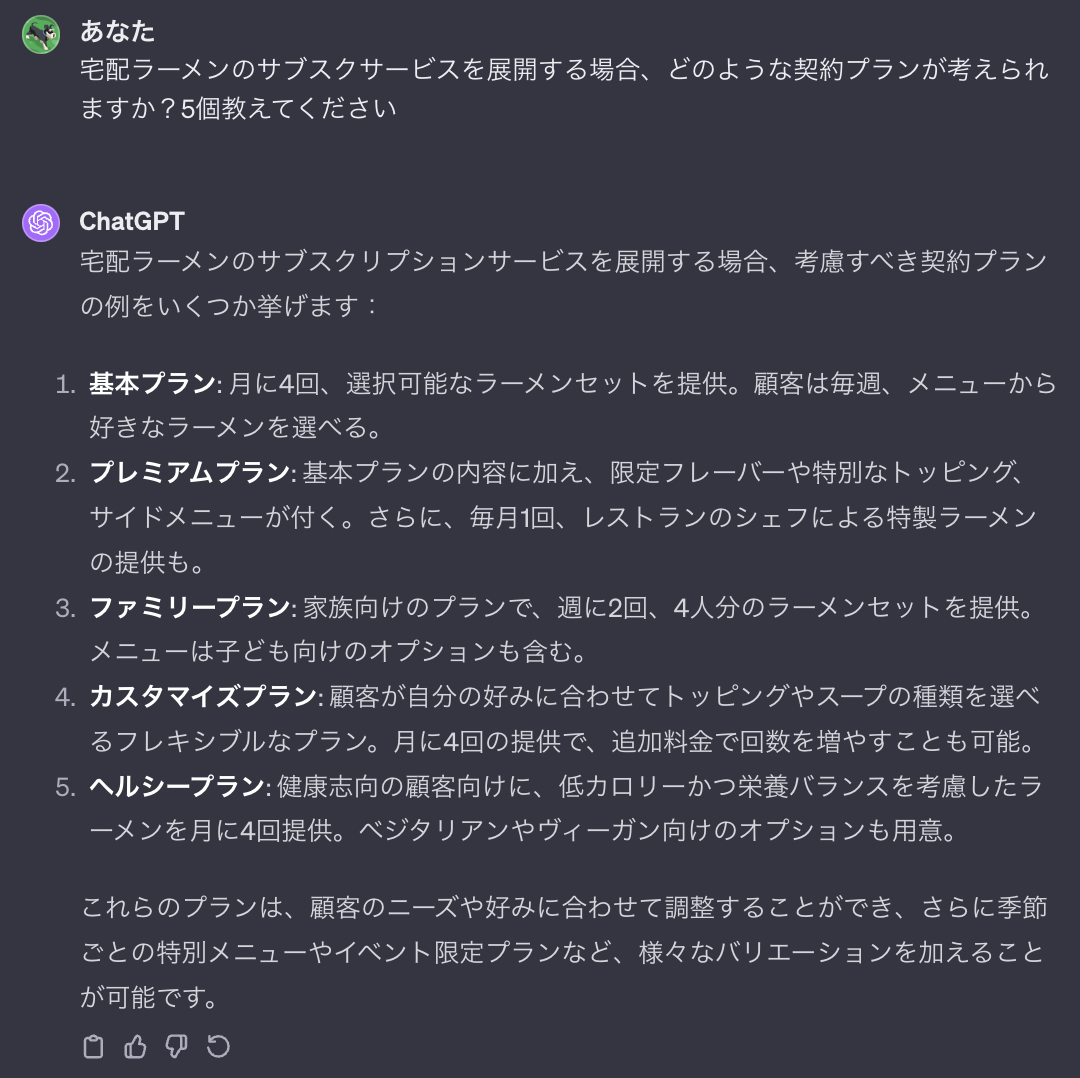
思ったより練られたプランが出てきました。笑
即採用です。
サンプルデータの作成
次に以下のプロンプトでサンプルデータをChatGPTに作成してもらいました。
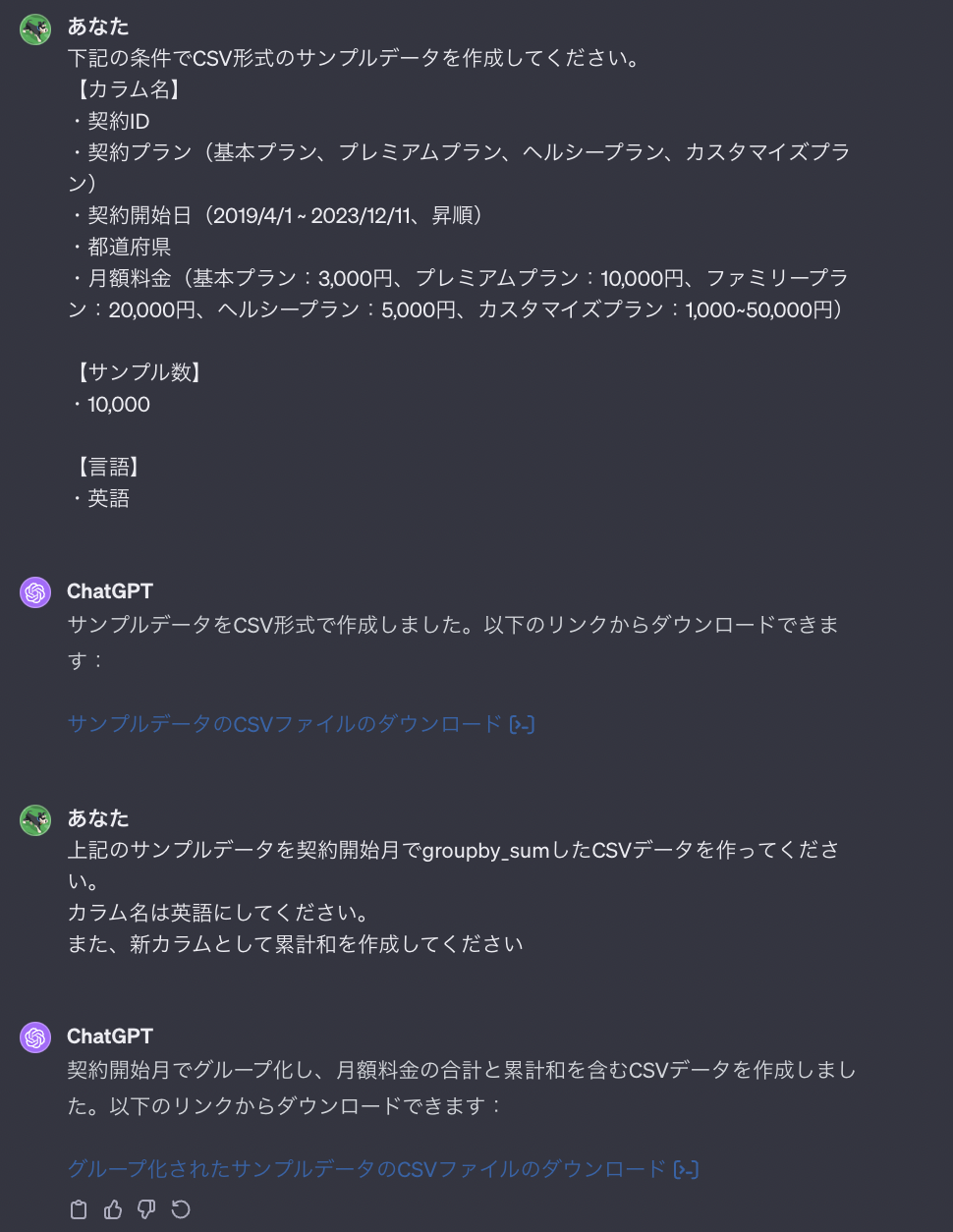
結果

まじでそれっぽいサンプルデータをCSVで作ってくれました。
実践
では早速先ほどのサンプルデータをQuickSightに読み込ませてグラフを作成していきたいと思います。
今回は社内のsandbox環境でバージニア北部リージョンを用いてお試ししています。
※ 前述の通り、Generative BI利用開始方法は省略します。
1. 売上(年月ごと)グラフの作成
まずは売上(年月ごと)のグラフを作成していきたいと思います。
Generative BIは英語対応のみ(2023/12/11時点)ですので、英語のプロンプトを作成します。
- 2023年12月11日時点の月次売上見込みを表示
下記のプロンプトを"Build a visual"に入力。
Cumulative Sum(Yen) in 2023-12
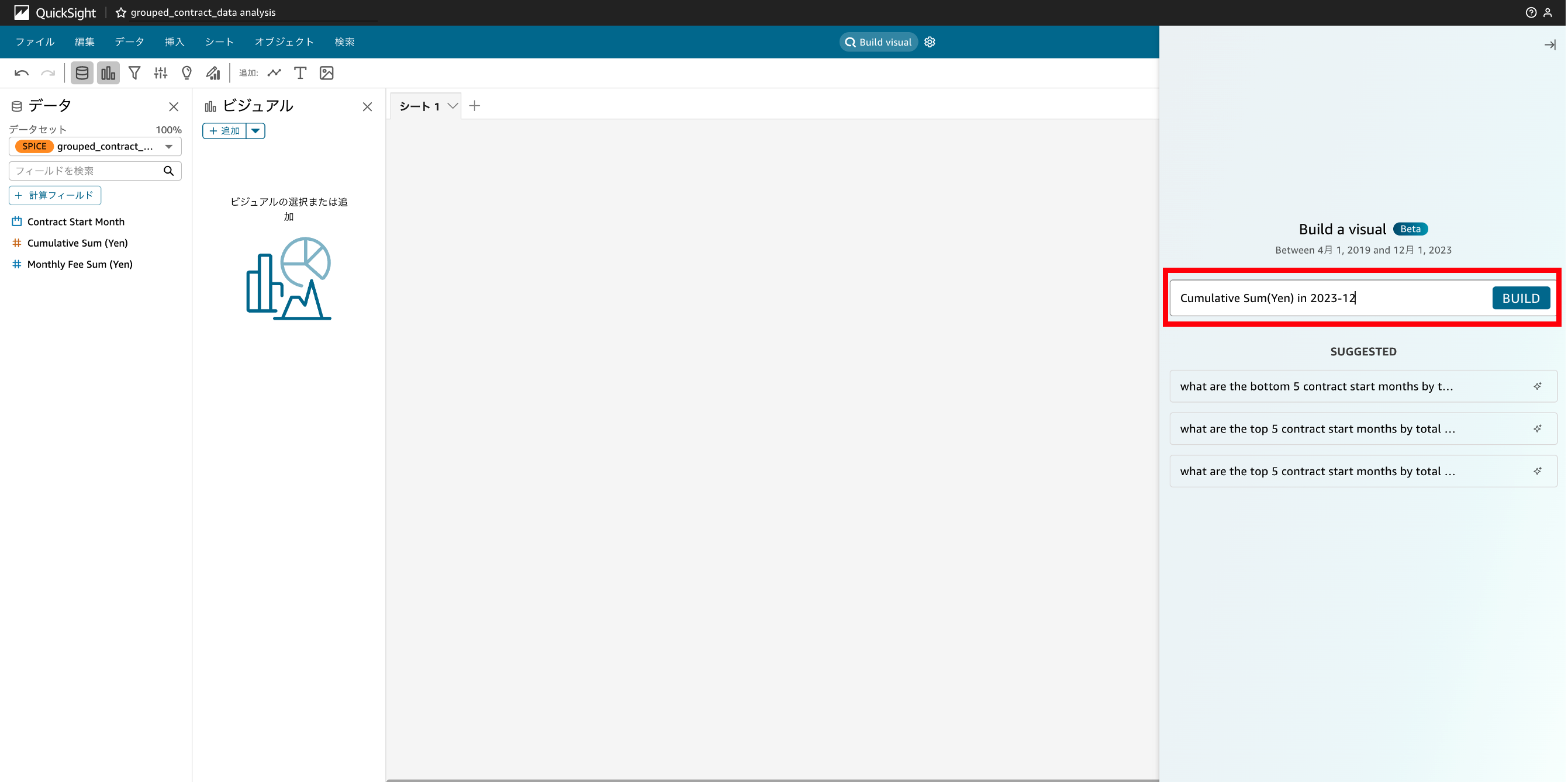
Buildを押すと、約3秒ほどで下記のようなボードが作成されました。
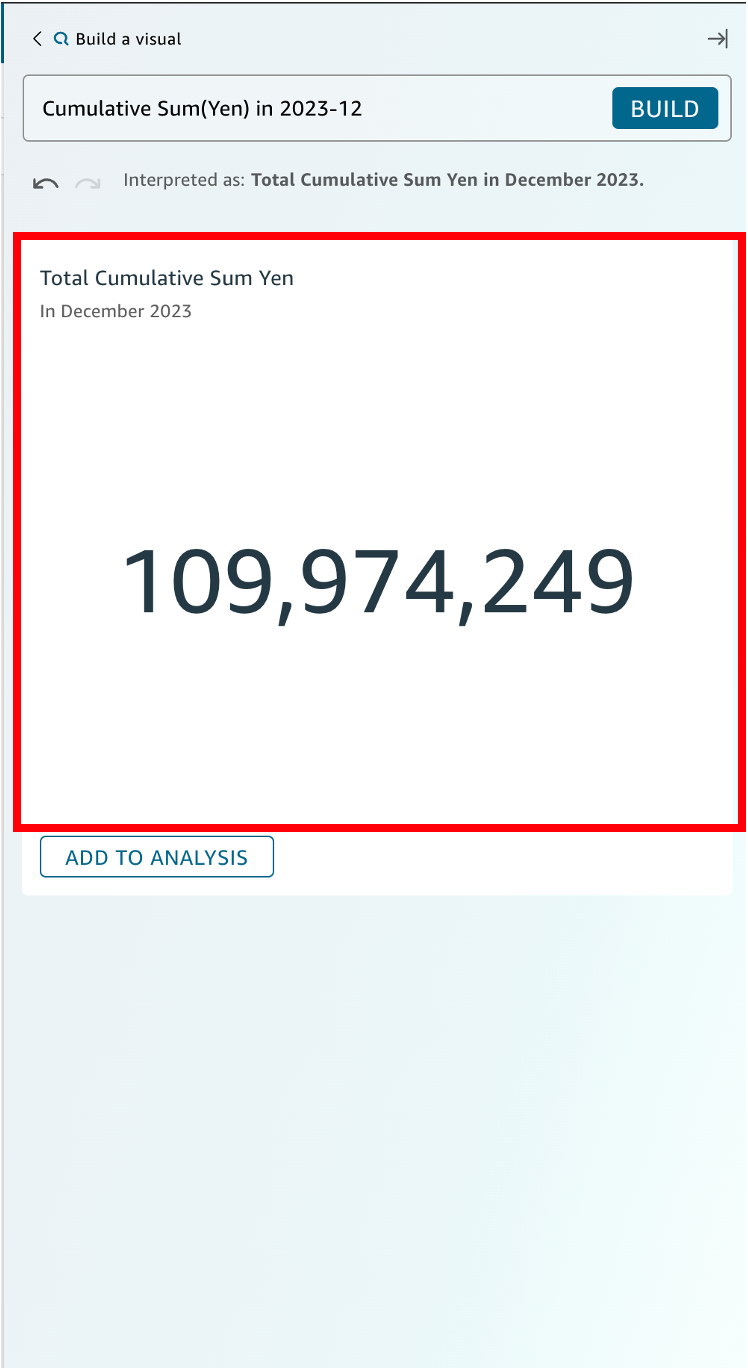
想定通りの出力であることを確認後、"ADD TO ANALYSIS"をクリックし、ビジュアルとして追加しました。
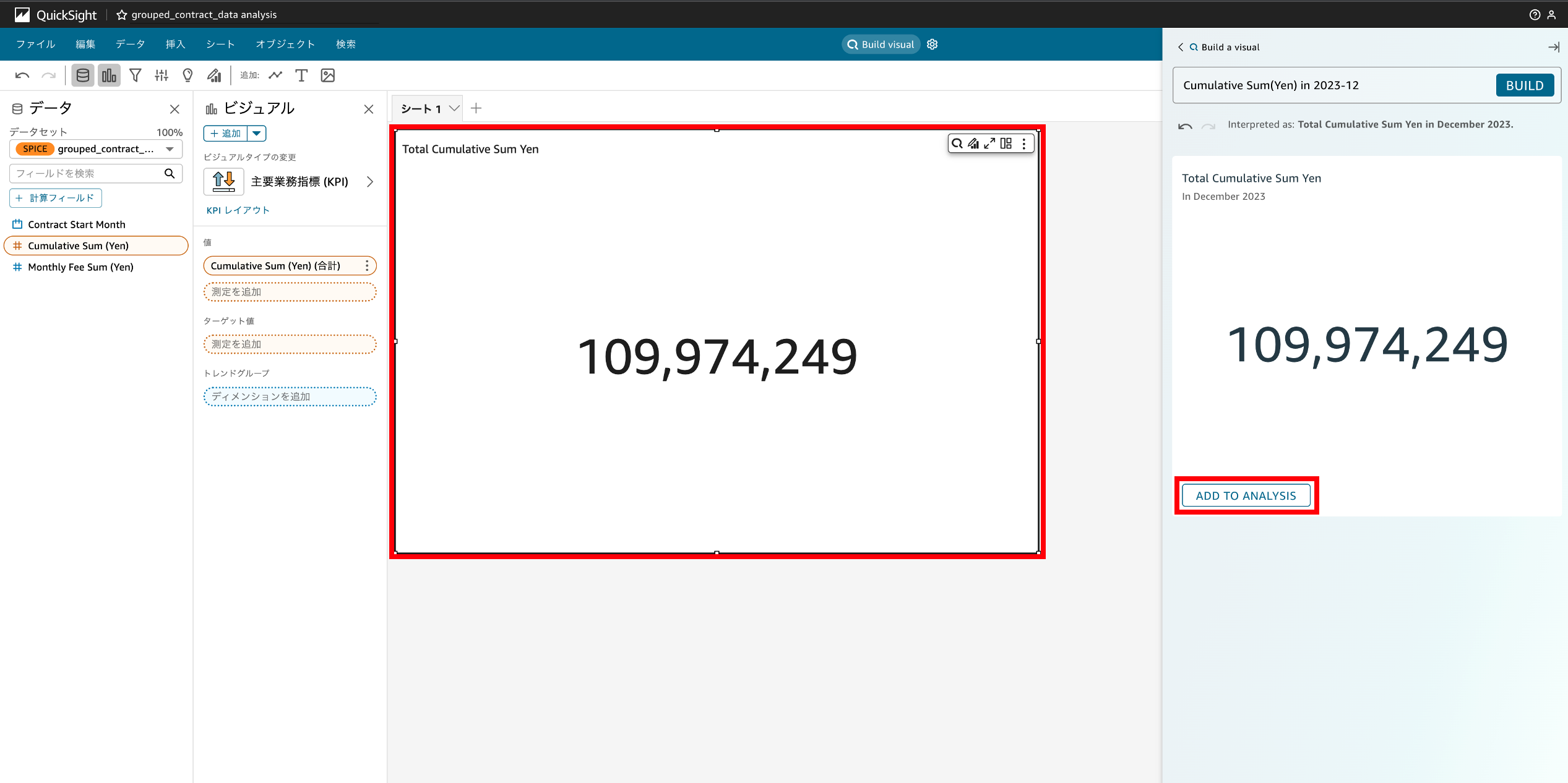
- 年月ごとの月次売上推移グラフを作成
同様に下記のプロンプトを入力。
Cumulative Sum(Yen) per months
こちらもほぼ想定通りのグラフが出力されました。
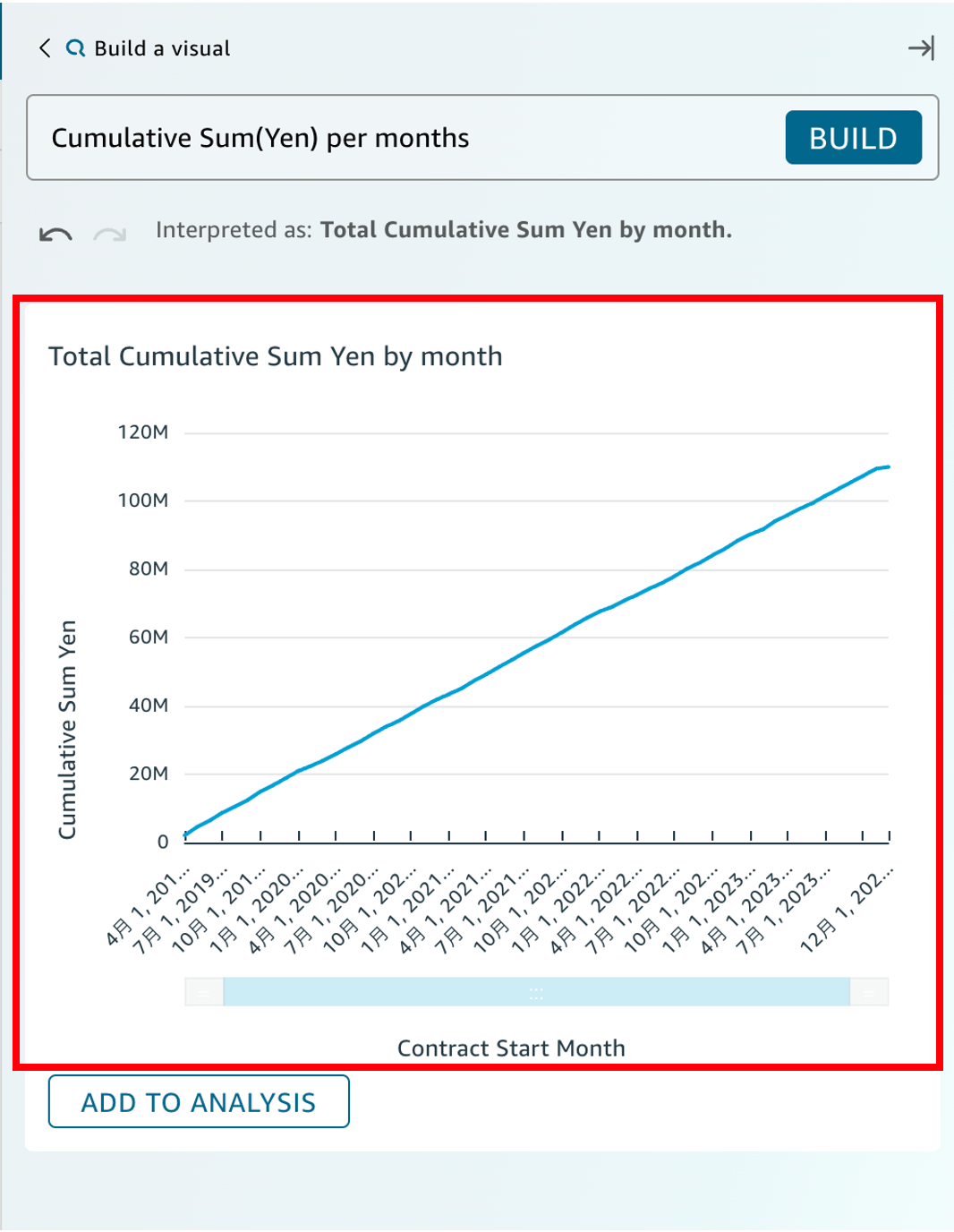
ビジュアル追加後、グラフの大きさを手動で変更した結果がこちら。
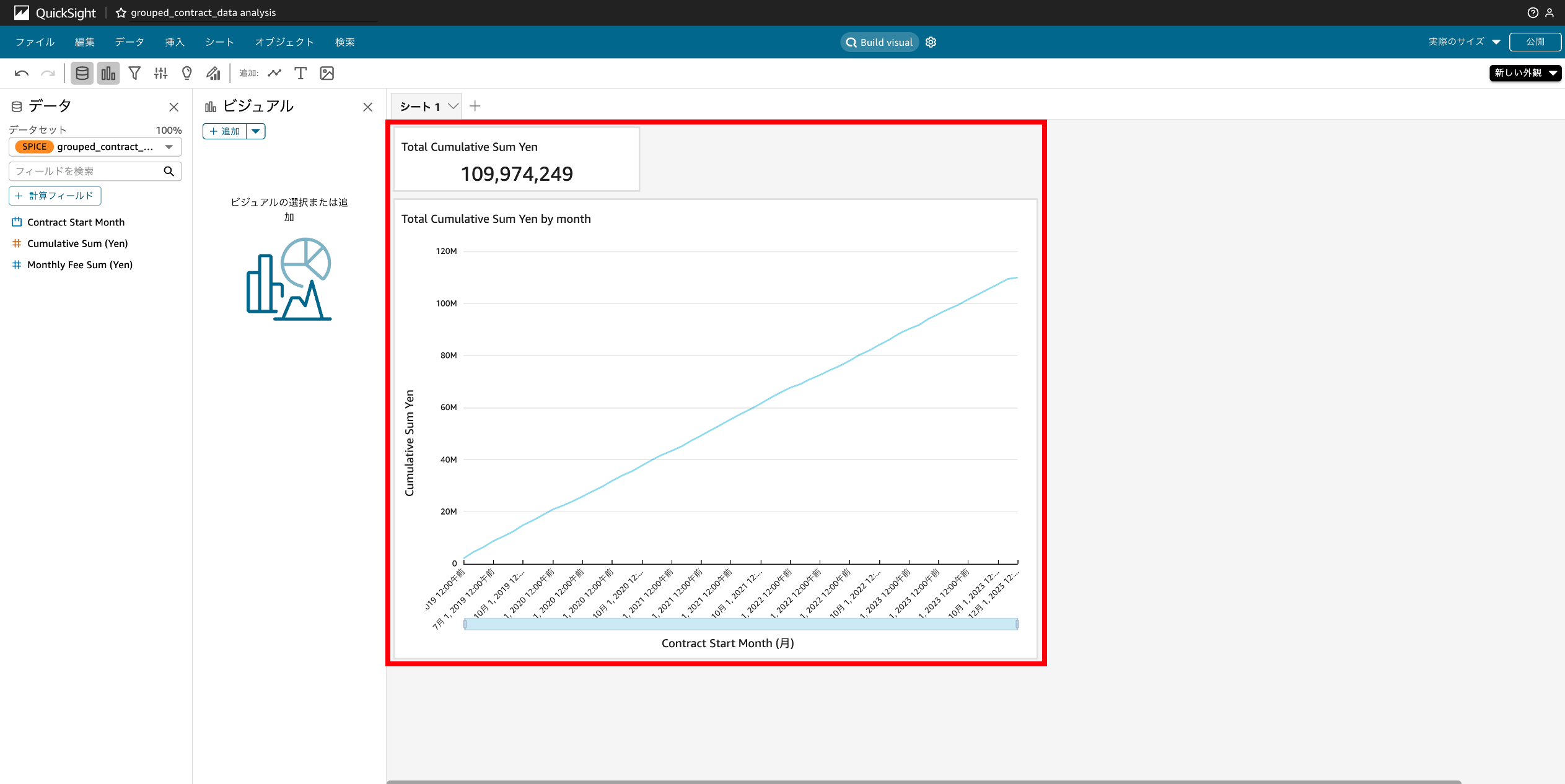
横軸が"MM月DD, YYYY HH/hh"形式となっていて見にくいので、ビジュアル変更を行います。
Generative BIはビジュアルの変更も自然言語で行えるようです。
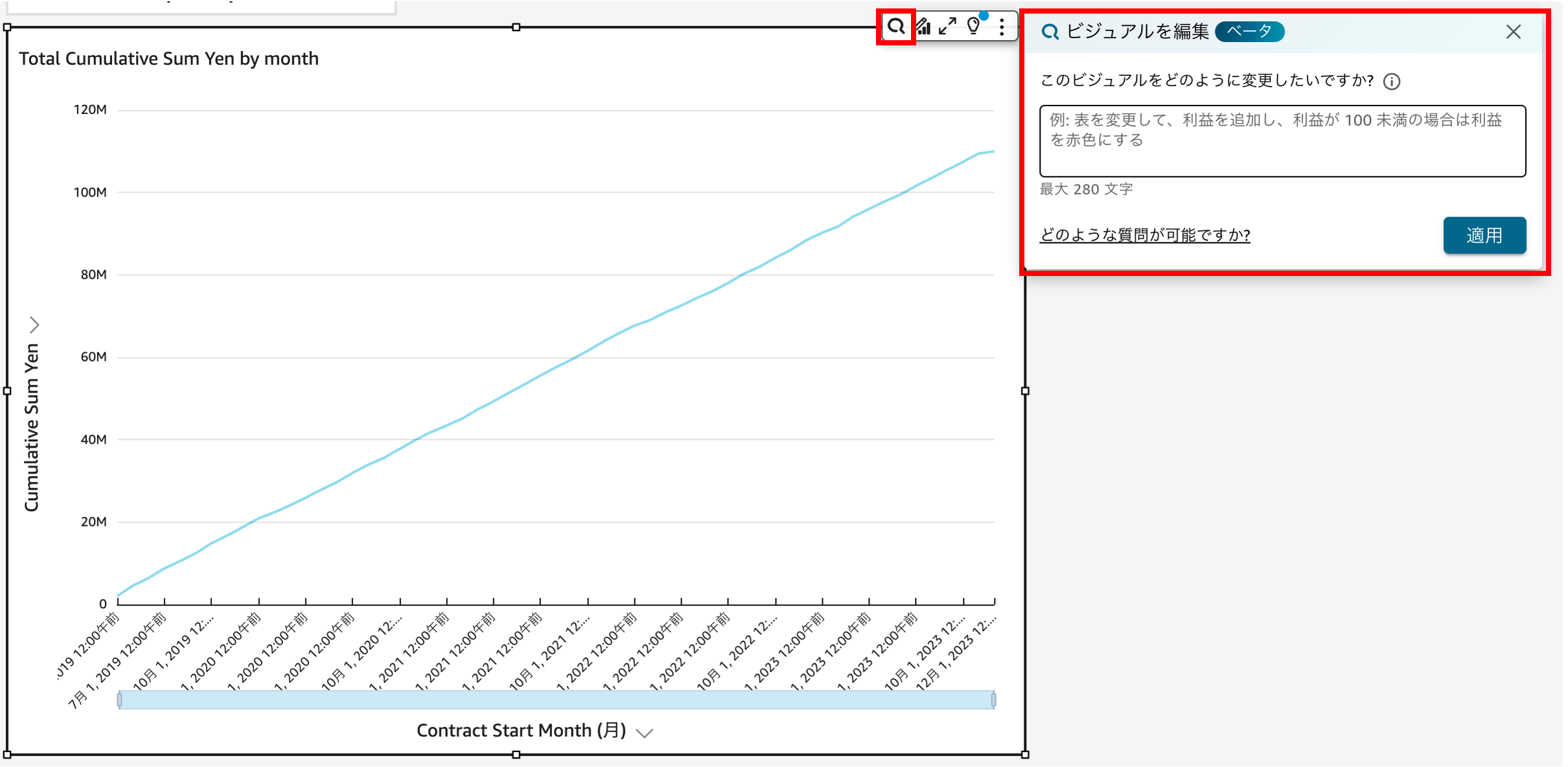
お気づきかと思いますが、私は英語力が高いわけではないので社内AI-chatBOTにサポートいただきます。
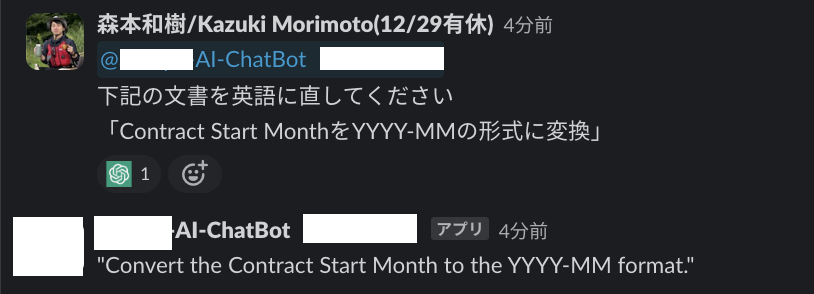
打ち込んでみる。
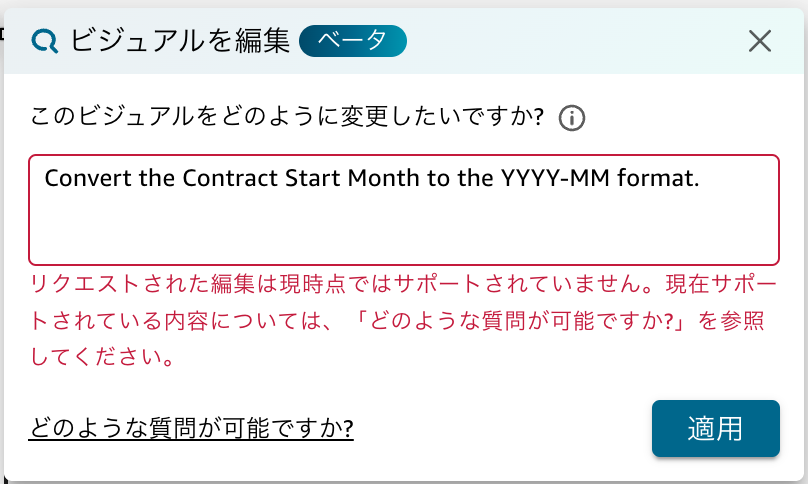
どうやらまだビジュアル編集機能は不十分な模様。
公式を確認してもまだできることは少なそうですので手修正します。
今後に期待ですね。
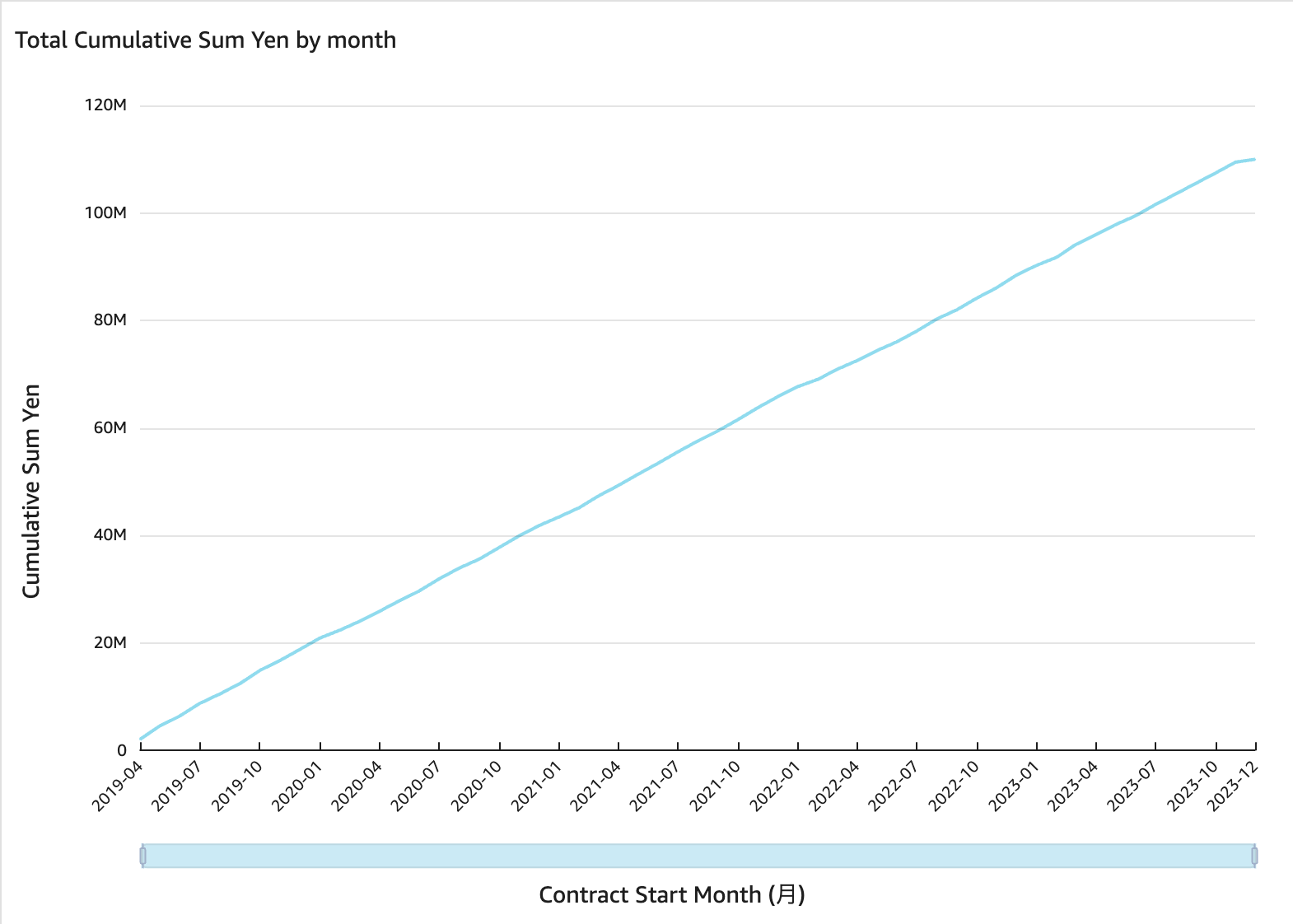
- 都道府県ごとの月次売上ランキングテーブルの作成
次はテーブル形式のビジュアルの出力に挑戦します。
またまた社内AI-chatBOTにサポートいただいて、下記プロンプトを入力。
Please provide the monthly fee sum yen for each prefecture in a ranking format in a table in December 2023
(in3つ続いとるやないかい!)
結果
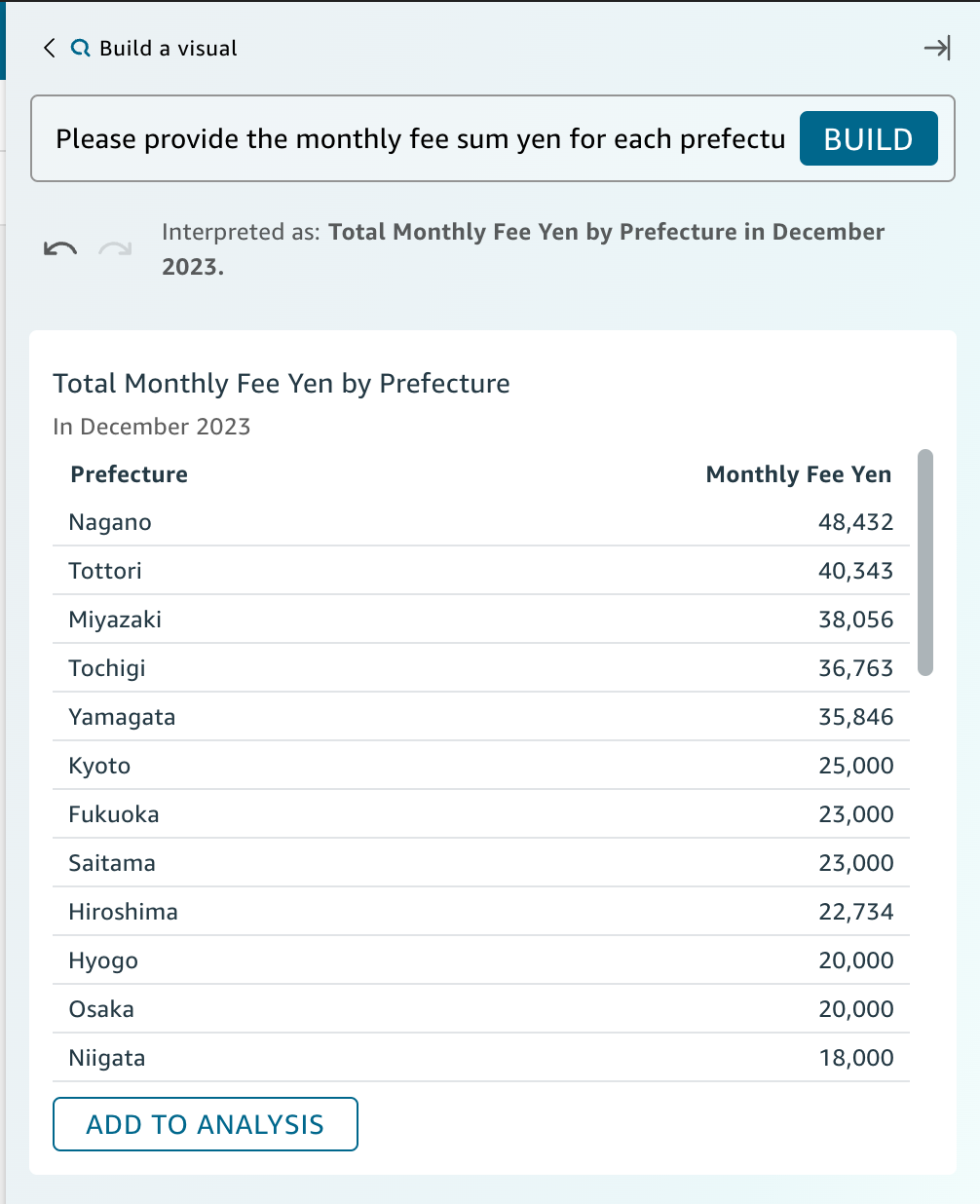
もー感動ですね。まさに欲しかったテーブルを表示してくれました。
ビジュアルに追加(グラフの大きさ等は手修正しております。)
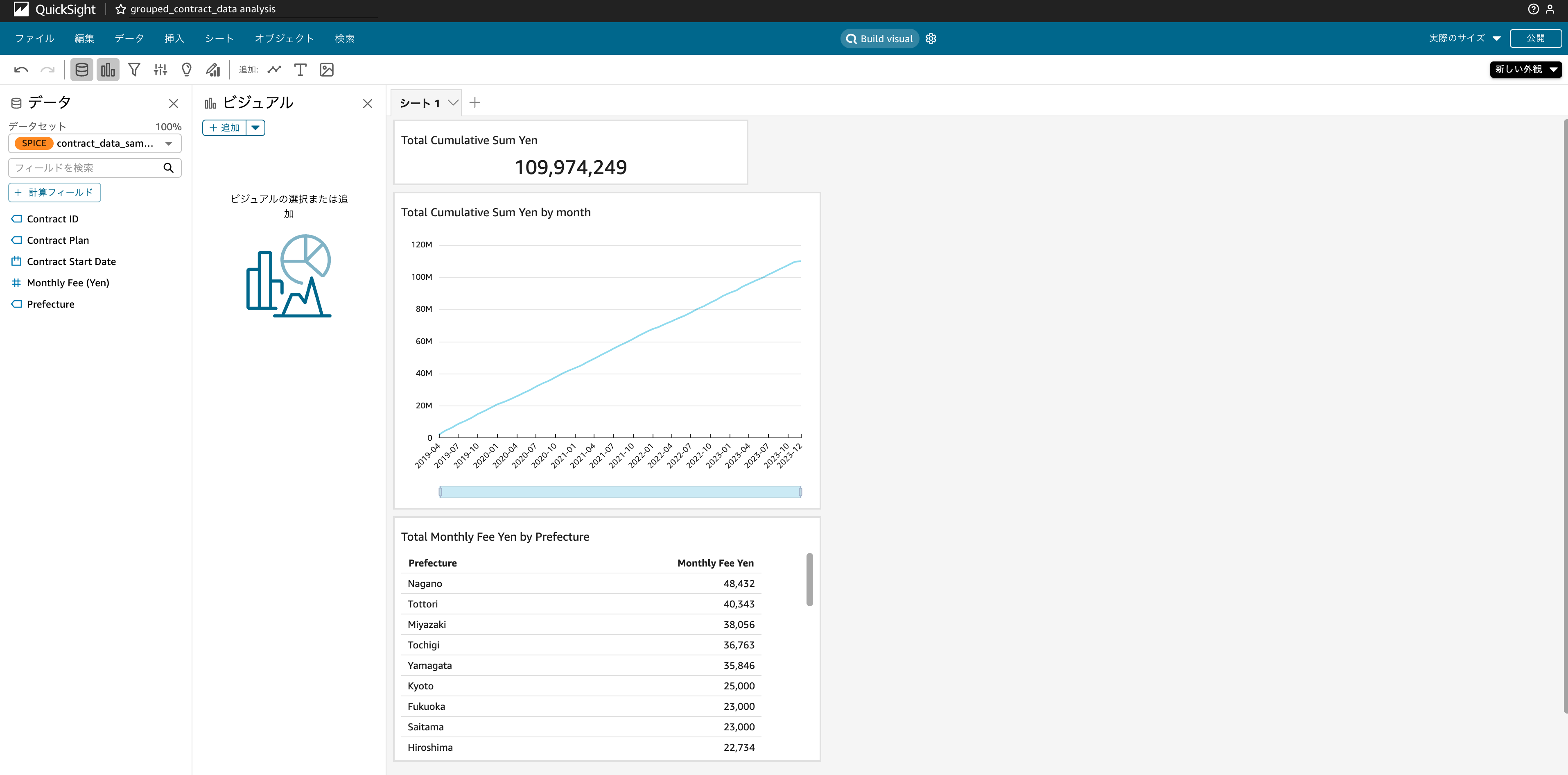
2. 契約プラン構成比
次に契約プラン構成比を円グラフで表示したいと思います。
例に漏れず社内AI-chatBOTに翻訳してもらい下記プロンプトを入力。
total unique number of Contract ID per contract plan in pie
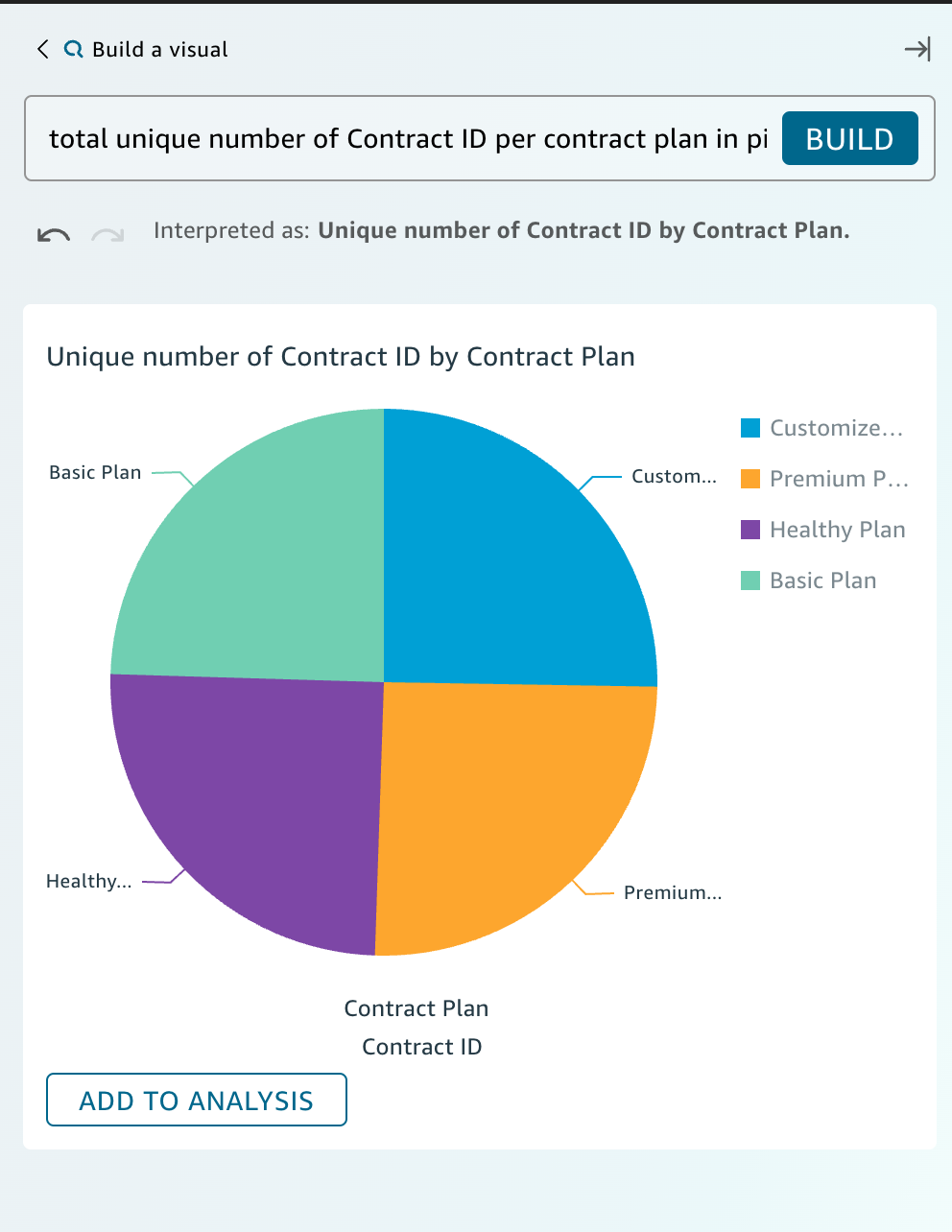
完璧ですね。
ついでにプランごとの月額料金の合計も表示してもらいます。
Total monthly fee for each contract plan in table
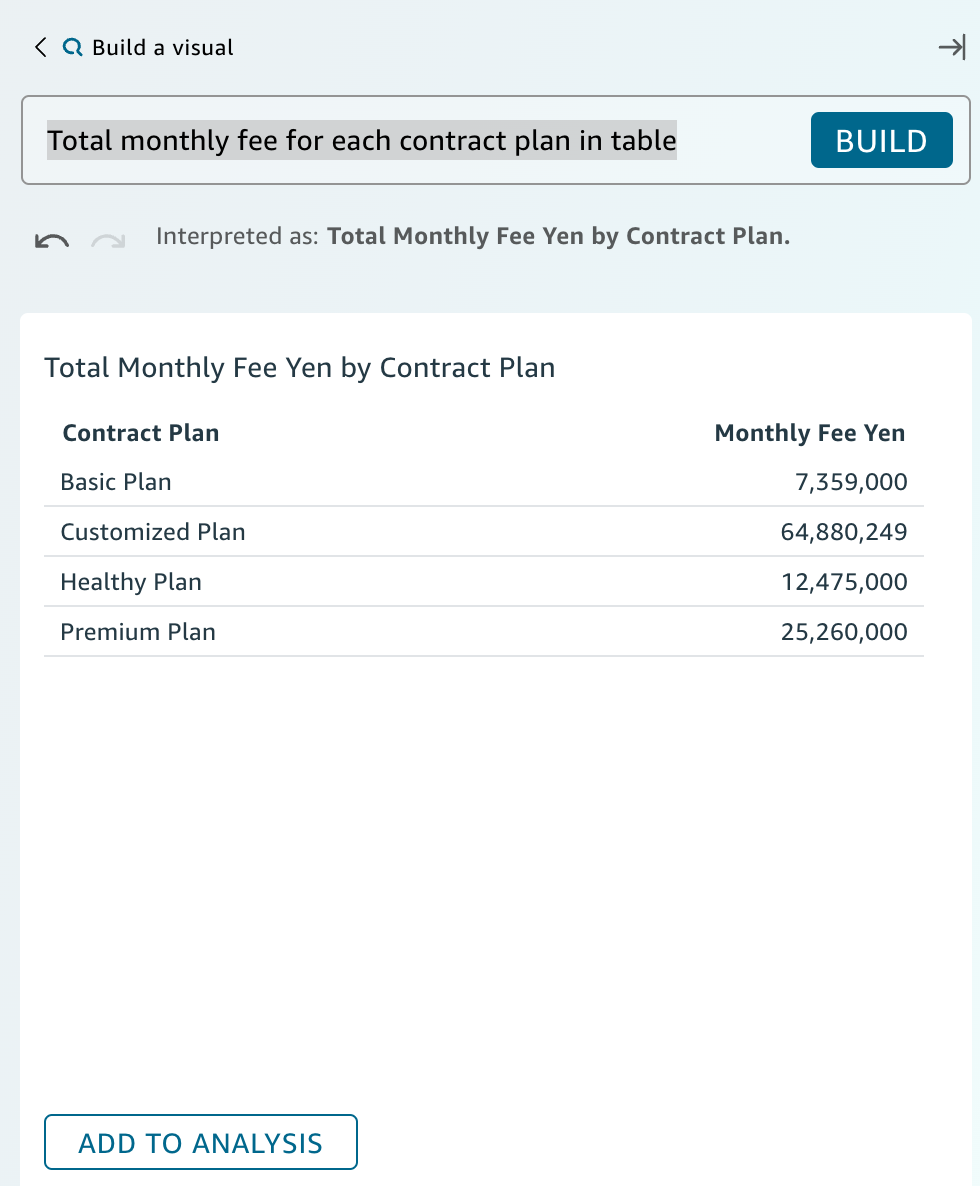
ダッシュボード表示
作成したグラフをダッシュボード化して確認してみます。
折れ線グラフの時系列フォーマット以外は全てGenerative BIに作成していただきました。
結構いい感じではないでしょうか!?

Exective summary
ダッシュボードの内容をもとにサマリーを作成してくれる機能もあるようです。
ダッシュボード画面の右上にある"Build"ボタンから"Executive summary"をクリック。
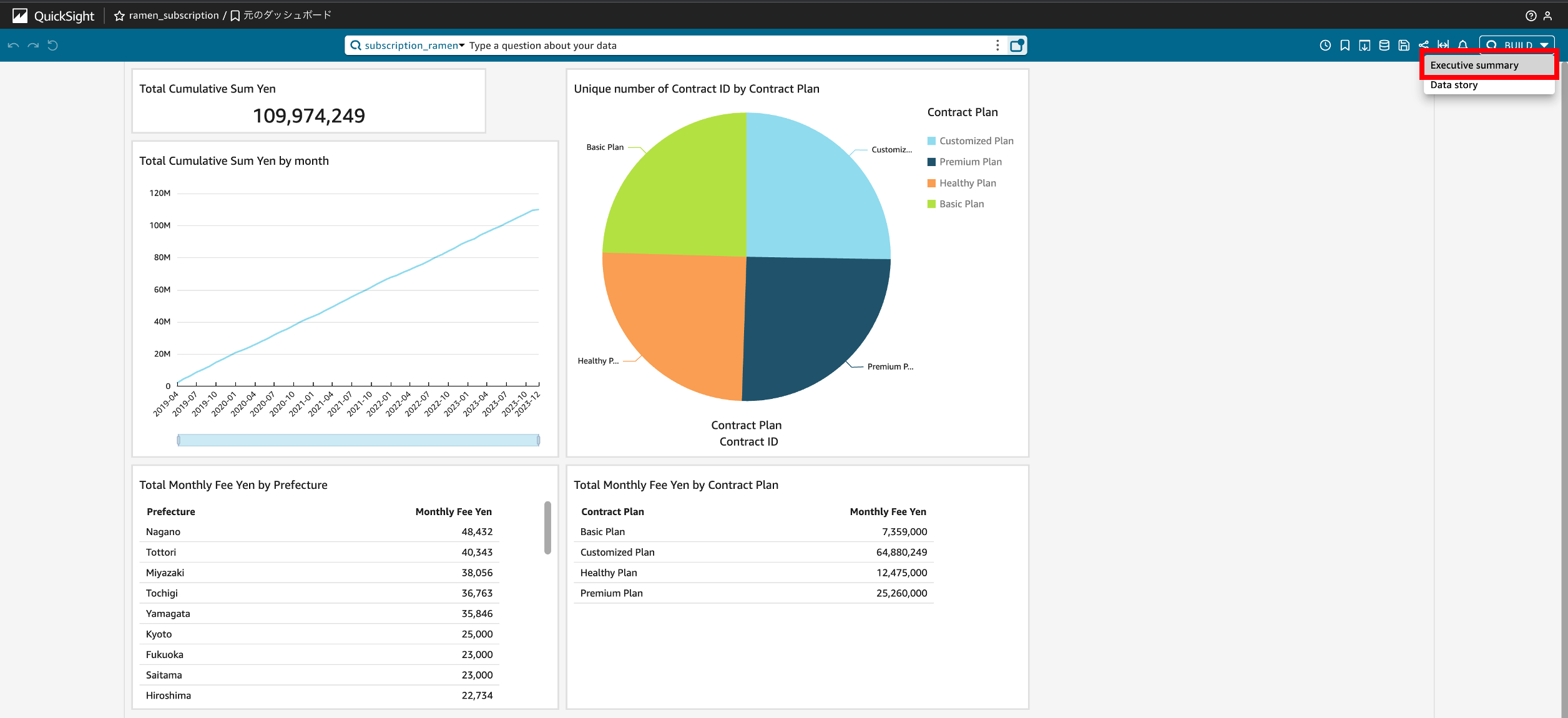
約10秒ほどでサマリーを作成してくれました。
構成としては、ダッシュボード全体の説明、各グラフの説明となっているようです。非常に簡易的ではありますが、内容も正しそうです。
また、グラフごとの説明にリンクが埋め込まれておりました。大規模なダッシュボードとかだとサマリをクリックすると、リンクされたグラフまで飛ばしてくれるので便利ですね。
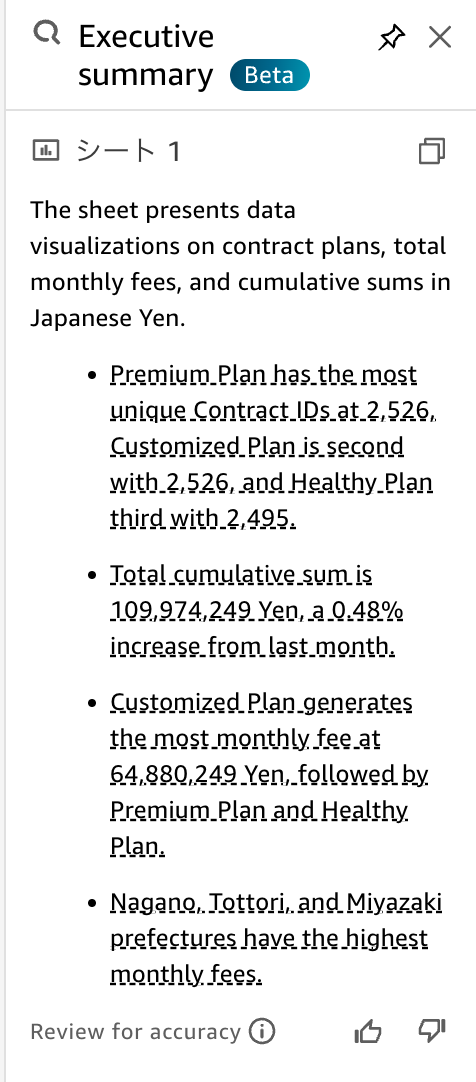
良かった点/今後に期待
良かった点
- 自然言語ベースの命令をすることで即座にグラフを作成してくれる。
簡易的なグラフであれば手作業で作るより早い。 - カラム名を明確に指示しなくてもある程度は察してくれる。
→逆に言うと、察してもらうために適切なカラム名をつけておく必要がある。 - 月次の集計等も自動でおこなってくれる。
- Exective Summary は資料の叩き台として使用できる。
今後に期待
- グラフの微修正機能がまだ不十分。
ただ、ここは自然言語というより手で行なった方が早そう。 - 英語対応のみ。(2023/12/11時点)
- 入力する欄が短く、文章の修正がしにくい。
長い文章を入力した後、思ったグラフが表示されず文章を修正したい場合、少しやりにくかった。。
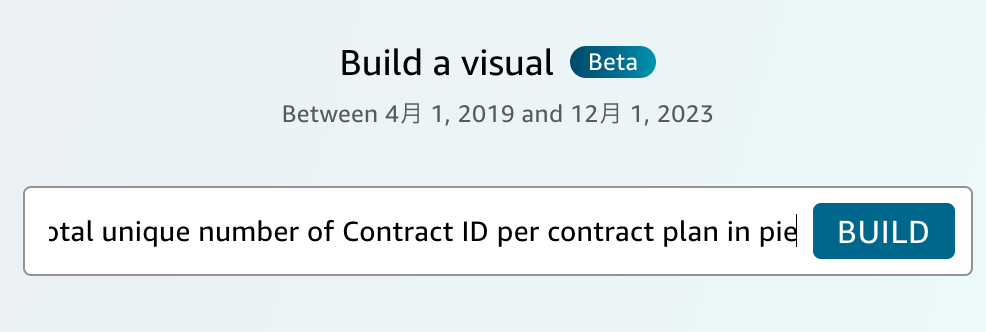
- 直近3ヶ月(last 3 months)などの時系列表現を汲み取ってくれない。
さいごに
今回はGenerative BIのパブリックプレビュー版を試してみました。
実業務で使えるかと言われるとまだそのレベルではないですが、今後のアップデート次第ではかなり期待感を持てるサービスだと思いました。
現状の見える化を手軽・高速に行うことができれば、ビジネス改善のサイクルもより早めて行くことができますので、今後が楽しみです。
(本筋とはそれますが、ChatGPTが作ったサンプルデータとイラストの完成度が高くてびっくりしました。)
また、分析Gの説明は下記テックブログに記載しておりますので、もしご興味あれば一読ください。
KINTOテクノロジーズ 分析グループを紹介します
関連記事 | Related Posts

言葉で語れば現れるデータの世界 - Amazon QuickSight Generative BIの魔法
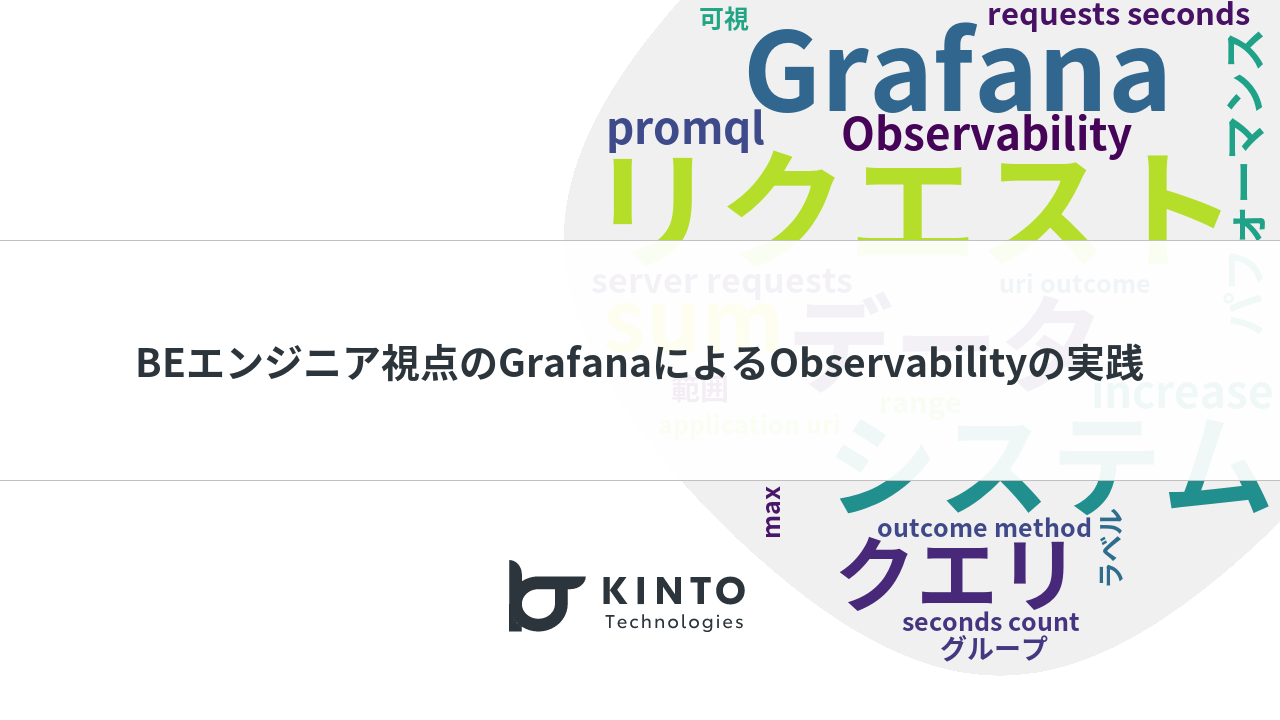
Practicing Observability with Grafana from a BE Engineer's Perspective

Streamlining SQL Creation Using GitHub Copilot Agent!
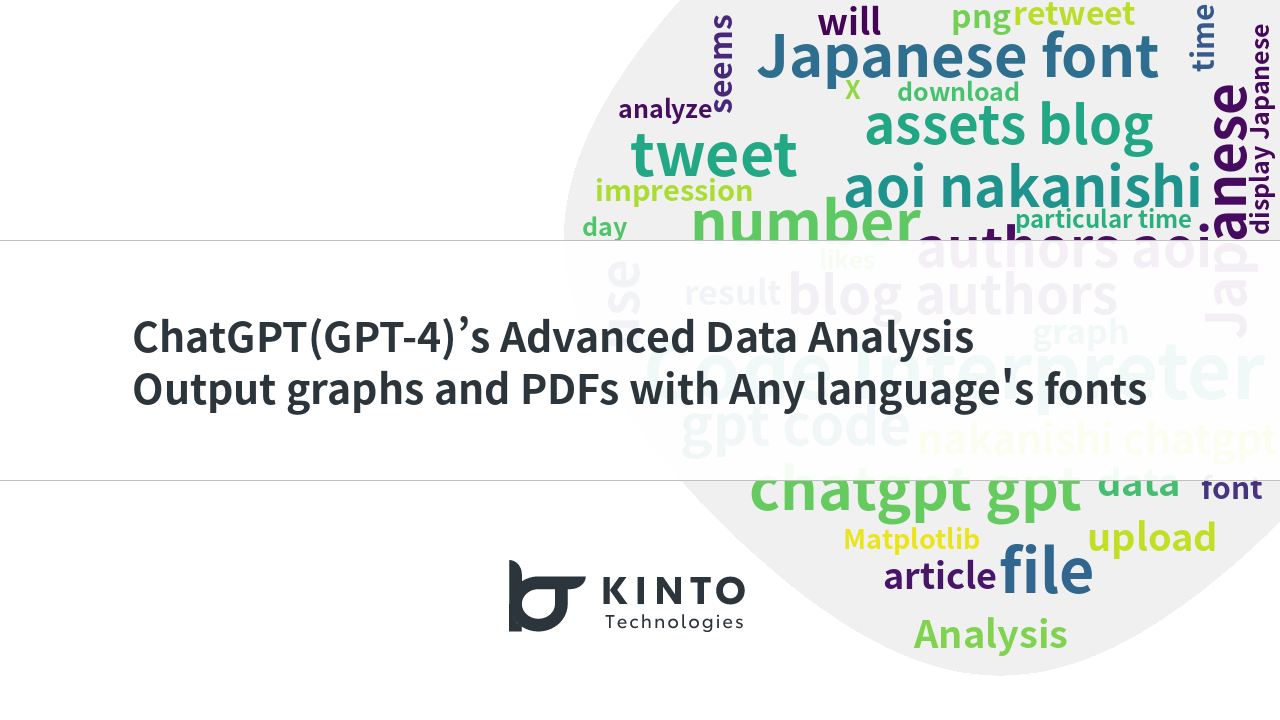
ChatGPT (GPT-4) Advanced Data Analysis (formerly Code Interpreter), how to output graphs, images, and PDF files with Japanese fonts to analyze X (formerly Twitter)

How an Infra Engineer Built a Full-Stack App with an AI Agent

Introducing the Internal Slack Chatbot Leveraging LLM
We are hiring!
【UI/UXデザイナー】クリエイティブ室/東京・大阪・福岡
クリエイティブGについてKINTOやトヨタが抱えている課題やサービスの状況に応じて、色々なプロジェクトが発生しそれにクリエイティブ力で応えるグループです。所属しているメンバーはそれぞれ異なる技術や経験を持っているので、クリエイティブの側面からサービスの改善案を出し、周りを巻き込みながらプロジェクトを進めています。
生成AIエンジニア/AIファーストG/東京・名古屋・大阪・福岡
AIファーストGについて生成AIの活用を通じて、KINTO及びKINTOテクノロジーズへ事業貢献することをミッションに2024年1月に新設されたプロジェクトチームです。生成AI技術は生まれて日が浅く、その技術を業務活用する仕事には定説がありません。
